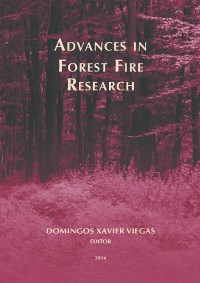Please use this identifier to cite or link to this item:
https://hdl.handle.net/10316.2/34172| DC Field | Value | Language |
|---|---|---|
| dc.contributor.author | Cano-Crespo, Ana | |
| dc.contributor.author | Oliveira, Paulo J. C. | |
| dc.contributor.author | Cardoso, Manoel | |
| dc.contributor.author | Thonicke, Kirsten | |
| dc.date.accessioned | 2014-10-22T11:44:59Z | |
| dc.date.accessioned | 2020-09-09T21:30:53Z | - |
| dc.date.available | 2014-10-22T11:44:59Z | |
| dc.date.available | 2020-09-09T21:30:53Z | - |
| dc.date.issued | 2014 | - |
| dc.identifier.isbn | 978-989-26-0884-6 (PDF) | |
| dc.identifier.uri | https://hdl.handle.net/10316.2/34172 | - |
| dc.description.abstract | While deforestation represents an obvious ecosystem change, forest degradation is often more difficult to discern or quantify, but it impacts a number of ecosystem functions which are vital for biodiversity and climate feedbacks. In the Brazilian Amazon, land-use changes increase fire occurrence, especially in fragmented forests close to managed land. We used remote sensing imagery to estimate the extent and impact of forest fires in degraded tropical rain-forest in the Brazilian Legal Amazon between 2007 and 2010 and examined land-use establishing in degraded areas. The trends in degraded area vs. burned area were different. Even though degradation increased one year after a high fire year, there was no spatial overlap, which points to other causes for degradation. Up to 11% of the degraded area was burned in the same year, playing escaping fires from managed and deforested lands a significant role in degradation by fire. Eighty-four percent of 2007s degraded area remained forest one year later, whereas the rest was identified as deforestation, secondary vegetation or pasture. Three years after degradation, 80% remained forest, the proportion of deforested area decreased and areas in regeneration after being deforested increased. Monitoring of forest degradation across tropical forests is critical for developing land management policies and for carbon stocks/emissions estimation. | eng |
| dc.language.iso | eng | - |
| dc.publisher | Imprensa da Universidade de Coimbra | por |
| dc.relation.ispartof | http://hdl.handle.net/10316.2/34013 | por |
| dc.rights | open access | - |
| dc.subject | Forest degradation | eng |
| dc.subject | Logging | eng |
| dc.subject | Forest fires | eng |
| dc.subject | Land-use | eng |
| dc.subject | Brazilian Amazon | eng |
| dc.title | Tropical forest degradation in the Brazilian Amazon: relation to fire and land-use change | por |
| dc.type | bookPart | por |
| uc.publication.firstPage | 1582 | - |
| uc.publication.lastPage | 1591 | - |
| uc.publication.location | Coimbra | por |
| dc.identifier.doi | 10.14195/978-989-26-0884-6_174 | - |
| uc.publication.section | Chapter 5 - Fire Suppression and Safety | por |
| uc.publication.digCollection | PB | por |
| uc.publication.orderno | 174 | - |
| uc.publication.area | Ciências da Engenharia e Tecnologias | por |
| uc.publication.bookTitle | Advances in forest fire research | - |
| uc.publication.manifest | https://dl.uc.pt/json/iiif/10316.2/34172/211115/manifest?manifest=/json/iiif/10316.2/34172/211115/manifest | - |
| uc.publication.thumbnail | https://dl.uc.pt/retrieve/11170326 | - |
| uc.publication.parentItemId | 53868 | - |
| uc.itemId | 70218 | - |
| item.fulltext | With Fulltext | - |
| item.grantfulltext | open | - |
| Appears in Collections: | Advances in forest fire research | |
Files in This Item:
| File | Description | Size | Format | |
|---|---|---|---|---|
| 978-989-26-0884-6_174.pdf | 1.51 MB | Adobe PDF |  |
Items in DSpace are protected by copyright, with all rights reserved, unless otherwise indicated.
